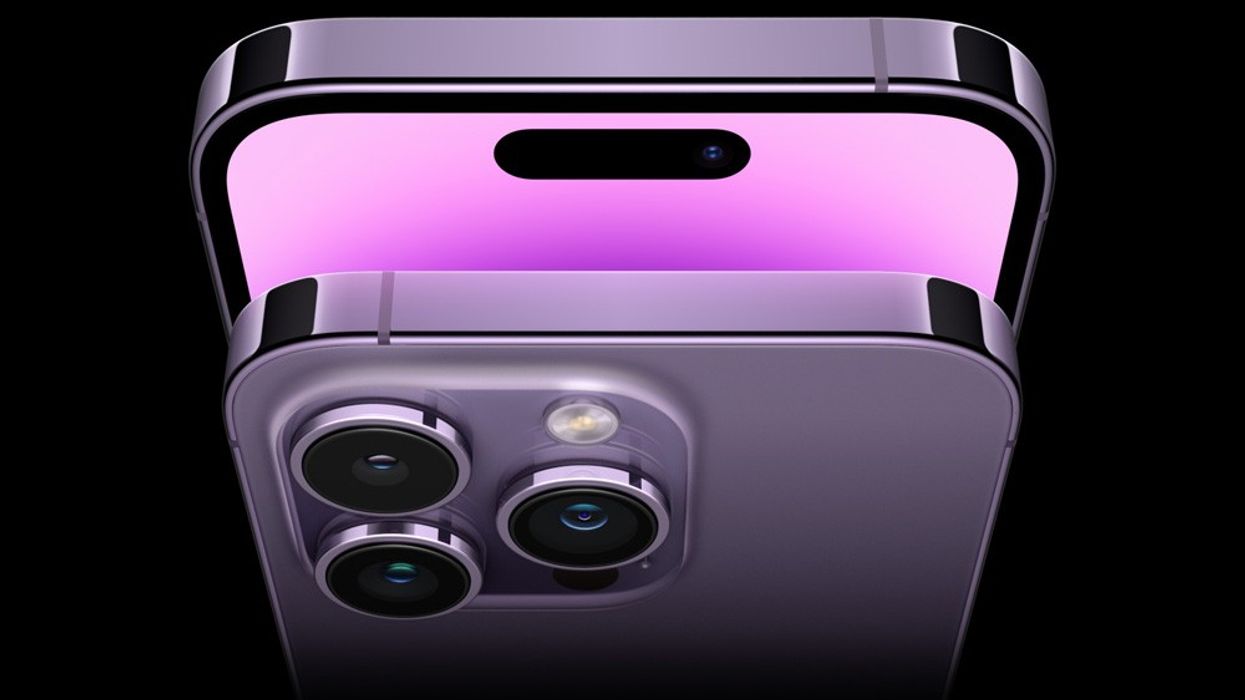How Does Apple Squeeze 48MP Out of the Tiny iPhone 14 Pro Camera?
It’s all smoke and mirrors. But we can call them "options" and "settings."

48 megapixels. That’s the maximum image resolution that iPhone 14 Pro users can achieve from its wide-angle camera. That’s a 65% boost in image resolution and almost as much as some medium-format cameras. But the iPhone's camera can also capture 12MP stills. Why the disparity?
Well, there's a whole lot to unpack, and we start with the camera array.
All Good Things Come In Threes
The iPhone 14 Pro rear camera array has three cameras. First, there’s a 12MP Ultra Wide 13mm camera with an ƒ/2.2 aperture and a six‑element lens. For long-distance shots, there’s the 12MP 77mm 3x Telephoto with an ƒ/2.8 aperture, optical image stabilization, and a six-element lens. Lastly, there’s the main 24mm ƒ/1.78 aperture camera with second-generation sensor-shift optical image stabilization and a seven‑element lens.
It's a lot of really intricate technology packed into a bounding box about 1 inch on each side. But the interesting things happen on the software side.
Credit: Apple
A Four-for-One Advantage
The iPhone 14 Pro Camera Sensor relies on something called “pixel binning,” which is the process of combining pixels and averaging the values. This can allow high-megapixel sensors to output a lower resolution to reduce noise and improve the frame rate. This concept is used in the iPhone's main 24mm camera and is called Quad-Pixel Arrangement, which is the Apple branded version.
This enables users to shoot RAW images and combine four pixels into one uber-pixel with 2.44 microns of real estate to capture 12MP images with great low-light capabilities. Or, each pixel can be used independently for a larger, more detailed 48MP image. And that gives content creators not only high-quality images but also options.
Users enable Apple ProRaw in the Settings menu by tapping on “Camera,” then “Formats,” and then toggling the Apple ProRaw option. This turns off Quad-Pixel Arrangement and will save the image in an uncompressed 48MP ProRaw format.
ProRaw can also be used in the 12MP lossless configuration by selecting that option in the ProRaw Resolution setting and turning on Quad-Pixel Arrangement. This feature groups the pixels into dedicated red, green, and blue clusters, and then the camera uses computational photography and machine learning to build up the image to its best possible presentation.

Going Deeper
Apple calls this processing “Deep Fusion” and has dedicated a special “photonic engine” processor on the Apple Silicon SOC (System on a Chip) to shoulder the heavy lifting. Deep Fusion takes the uncompressed RAW image data from up to 12 photos and combines them to produce a 10-bit and 12-bit color gamut for up to 68 billion shades.
There is also 2x the improvement in the wide camera and 2.5x for the primary camera. While the iPhone's cameras may seem impressive, a lot of the work is done on the software level.
Credit: Apple
Shooting in the 48MP mode enables cropping, reframing, and zooming into those high-resolution images without much detail loss like one normally would. This is really beneficial for producing those two camera angles in one image by cropping. The 48MP camera also provides better contrast in the sky and finer detail in background images.
The result, however, is a far larger image file size, which can be detrimental if creatives bought the 128GB model. Images shot with 48MP resolution can be upwards of 100MB in size. When you add in 4K ProRes HDR video at up to 60 frames per second using Apple’s new Cinematic Mode and Action Mode image stabilization, you have a mobile filmmaking tool that will eat up that 128GB in no time at all.
But, creatives will have incredible-looking footage that is starting to give dedicated cameras a run for their money.
Better in Low Light
Conversely, Quad-Pixel Arrangement mode allows for better low-light performance because the camera can dedicate four times the light-gathering capacity to each pixel bundle, even though it’s a 12MP image. In low light, Apple has improved its performance, even if it's at the expense of some detail. But Apple does its best to mitigate this with larger aperture lenses and the quad-pixel arrangement. Shooting in Pro-Raw with 12MP is also beneficial. As with all things in photography and video, there are sacrifices to be made.
Low-Light photography utilizing Quad-Pixel ArrangementCredit: Apple
Hopefully, as the Quad-Pixel Arrangement technology matures, Apple's engineers can find a way to let content creators have it all. But until then, having high-resolution details or deeper color and low light options will provide users with a much-needed boost.
What do you think about the iPhone 14's capabilities? Let us know in the comments!
Check out weekly specials, deals, and rebates: Pro Video Gear, Pro Audio Gear, Lighting











